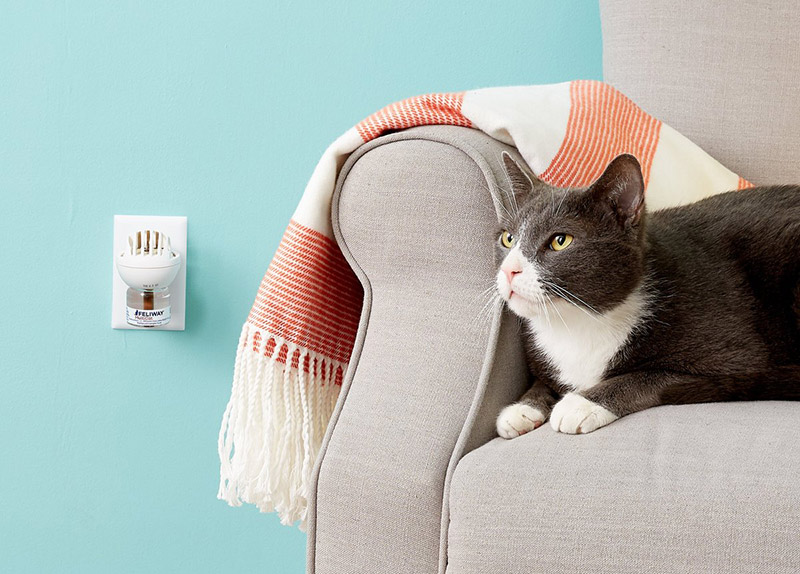How to Introduce Two Cats When One Is Aggressive (11 Vet-Approved Tips)

Updated on
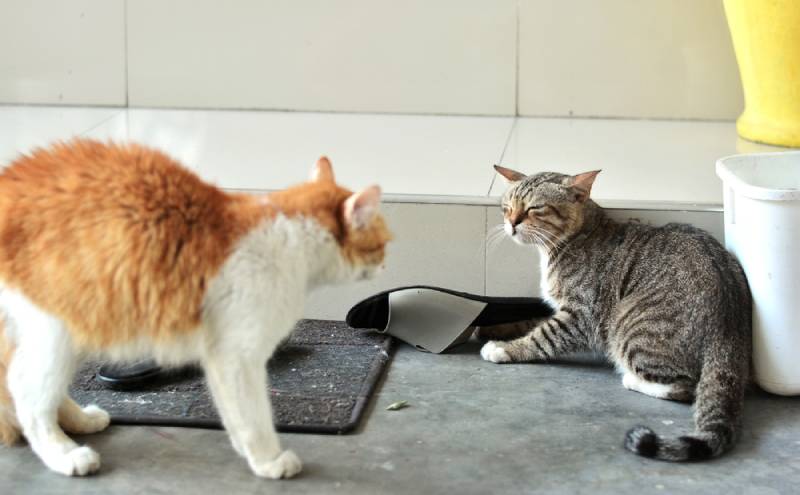
Introducing new cats can be a challenge. It can be especially difficult if one cat has lived its entire life as the only cat in a household or if one cat has had very little socialization at a young age. In these cases, it is not unusual for that cat to show signs of aggression toward the other cat, and this can, at best, lead to the two cats not bonding and, at worst, fighting. There are steps you can take to help prevent or at least minimize the aggression, but it can take time and a lot of persistence and consistency to encourage a harmonious relationship between the two felines.
Whether you’re introducing cats for the first time, have cats that have never really gotten along, or are reintroducing a cat and there is aggression, try the following tips to help encourage a more peaceful environment.
The 11 Tips to Introduce Two Cats When One Is Aggressive
1. Don’t Let Them Resolve It Themselves
Some owners have the notion that letting aggressive cats get on with it and duke it out will resolve the situation. In truth, this is only likely to cause anxiety and make the situation worse. The non-aggressor will find the whole experience harrowing and difficult and will be much less likely to approach the aggressive cat in the future.
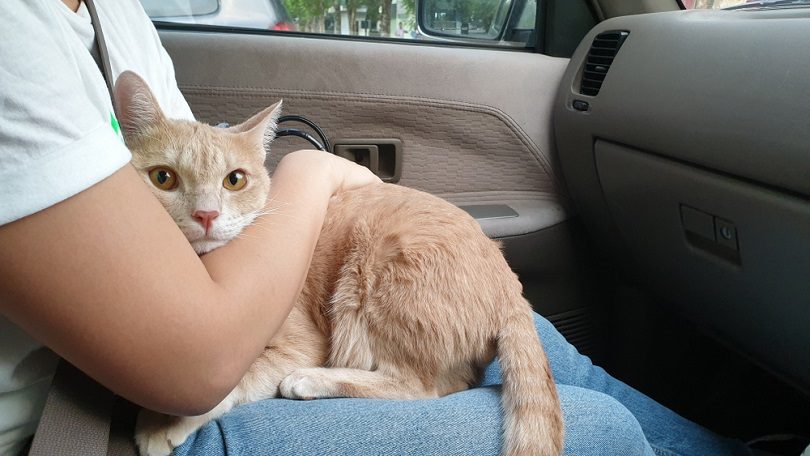
2. Get Them Neutered
Unneutered male cats are more likely to be aggressive than neutered males or females, and this is especially true if you have two or more in the same house. Cats are territorial, and even if the cats are littermates, they may look at the other cats as invaders of their rightful space or resources. There are other benefits to having male cats neutered, too. They are less likely to run away, and neutered cats are also less likely to get ill plus they have a longer life expectancy.
3. Give Them Space
Give each of the cats their own space away from the other. Ideally, the space should be in separate rooms. Allow them time to get used to their spot before introducing the cats and if things do get heated, you can remove each cat to their own area.
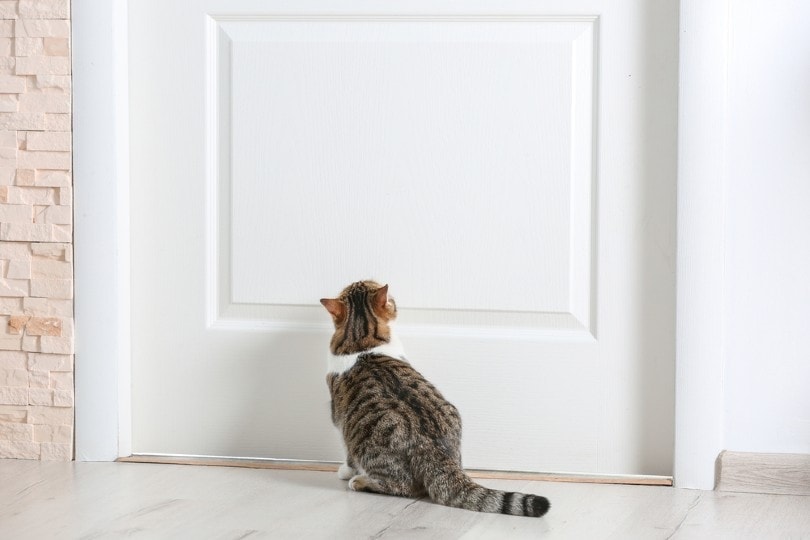
4. Provide More Than Enough Resources
You should also look to provide additional areas for your cats to chill out. Make sure you have enough scratching posts and beds that they can have at least one each. You should also have one litter tray per cat, plus one extra, and you can add extra perches and other locations for your cats to go and cool down or get out of the way.
5. Ignore the Aggressor
If one cat is getting aggressive, it is very easy to make a fuss over that cat by providing them with attention in a bid to try and calm their behavior. However, your cat will feel like they are being praised for their aggressive actions, therefore encouraging them to be aggressive again in the future.

6. Reward Positive Behavior
Instead of fussing over your aggressive cat when they show aggressive tendencies, you should praise them, love them, and even reward them with a tasty treat when they calmly smell and groom the other cats. Initially, you should reward the cats whenever they do anything positive, and make sure you do it every time. Over time, you can reduce the frequency that you reward until, eventually, you only need to praise or reward them occasionally.
7. Try Calming Pheromones
Calming pheromones are natural and they can be used to calm any anxiety in cats. They are more effective on some cats than others, and if your cat is really riled up, then pheromones may not help clear the red mist. But they are worth a try and many owners have enjoyed success with these types of products. Make sure you choose the “multi-cat” kind because there are different products available in the market.
8. Separate Them
If one of your cats is being aggressive, you need to separate them. Ideally, you shouldn’t get in the middle of the fight because cat claws can do some serious damage. Get their attention and then move the cats away and into their own separate areas to calm down.
9. Introduce Gradually
Never try rushing an introduction. Start by interchanging toys or blankets with the other cat’s smell and pairing the presentation with treats. After a while of doing this, the next step is having the cats separate, ideally with a barrier like a stair gate between them. Let them get used to the smell and the sight of one another. Once they can sit or go about their business separated by a barrier, you can try introducing them for a few minutes at a time.
If they remain calm, pair these introductions with positive experiences, such as play or even a treat. You should be very aware of their body language and prevent any interaction if they show precursors of aggression, such as hissing. Separate th
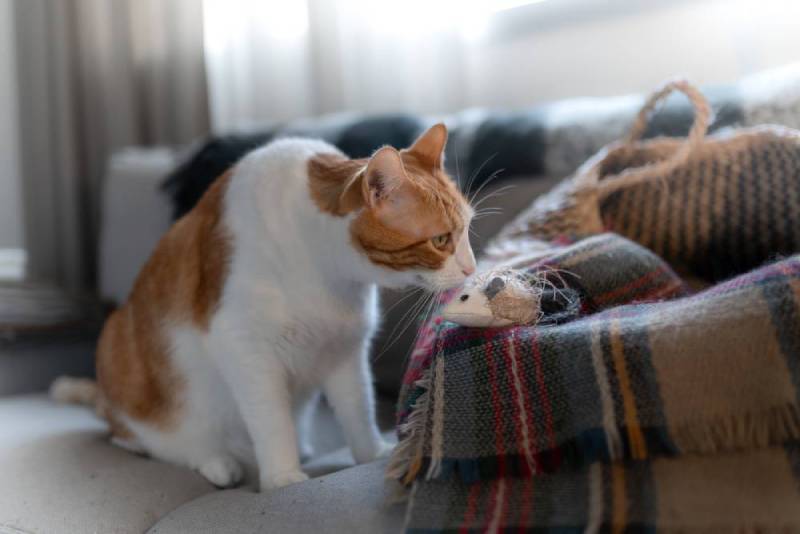
10. Encourage Grooming
Some owners have had luck putting tuna oil on their cats. They are so busy licking a tiny bit of fish oil and grooming one another that they effectively forget to be aggressive. It does, however, leave your cat’s coat sticky and covered in tuna oil!
11. Change Their Experience and Perception
If you can change your cat’s experience in the presence of the other cat by encouraging play and using toys, food, or treats to your advantage, it could be enough to prevent aggressive behavior, and if you continue to do this when they meet, your cats may lose the urge to fight.
Final Thoughts
It can take some time to introduce cats that are aggressive to one another. You need to take it slowly and not force the situation to ensure that your feline friends have a gradual introduction and don’t get too anxious. Ensure they have their own spaces that they can retreat to, and try to pair each other’s presence with positive experiences and good outcomes as your primary technique. Besides this, pheromones or even a tiny bit of fish oil could be enough to help them bond.
Featured Image Credit: Photo object, Shutterstock


